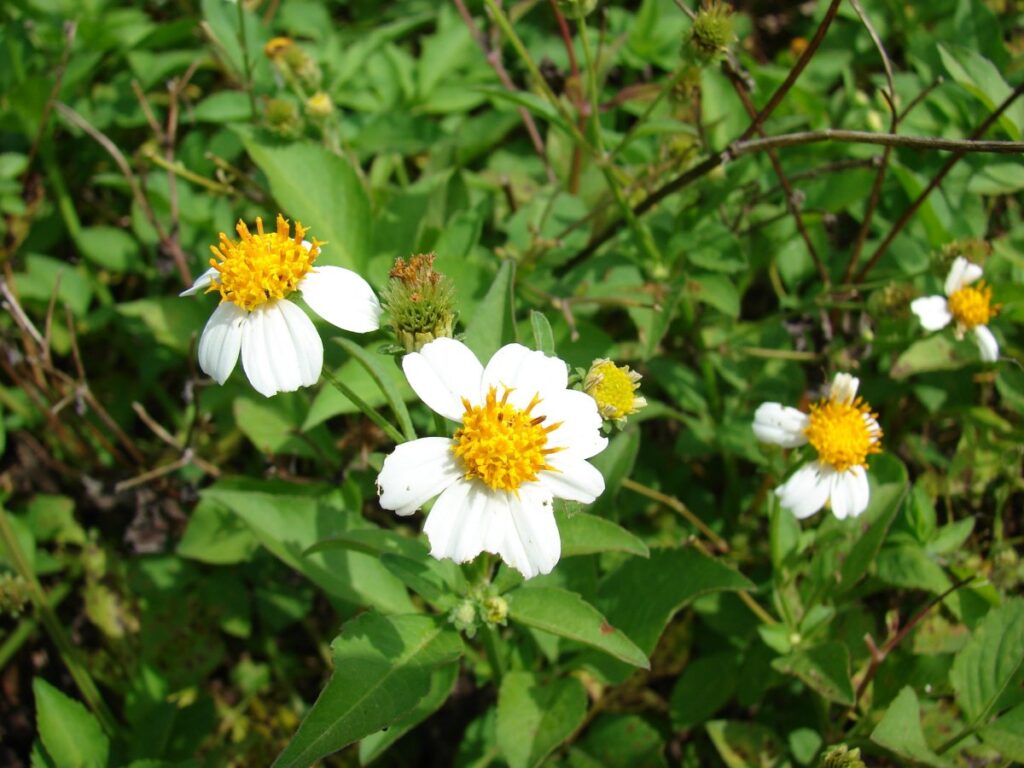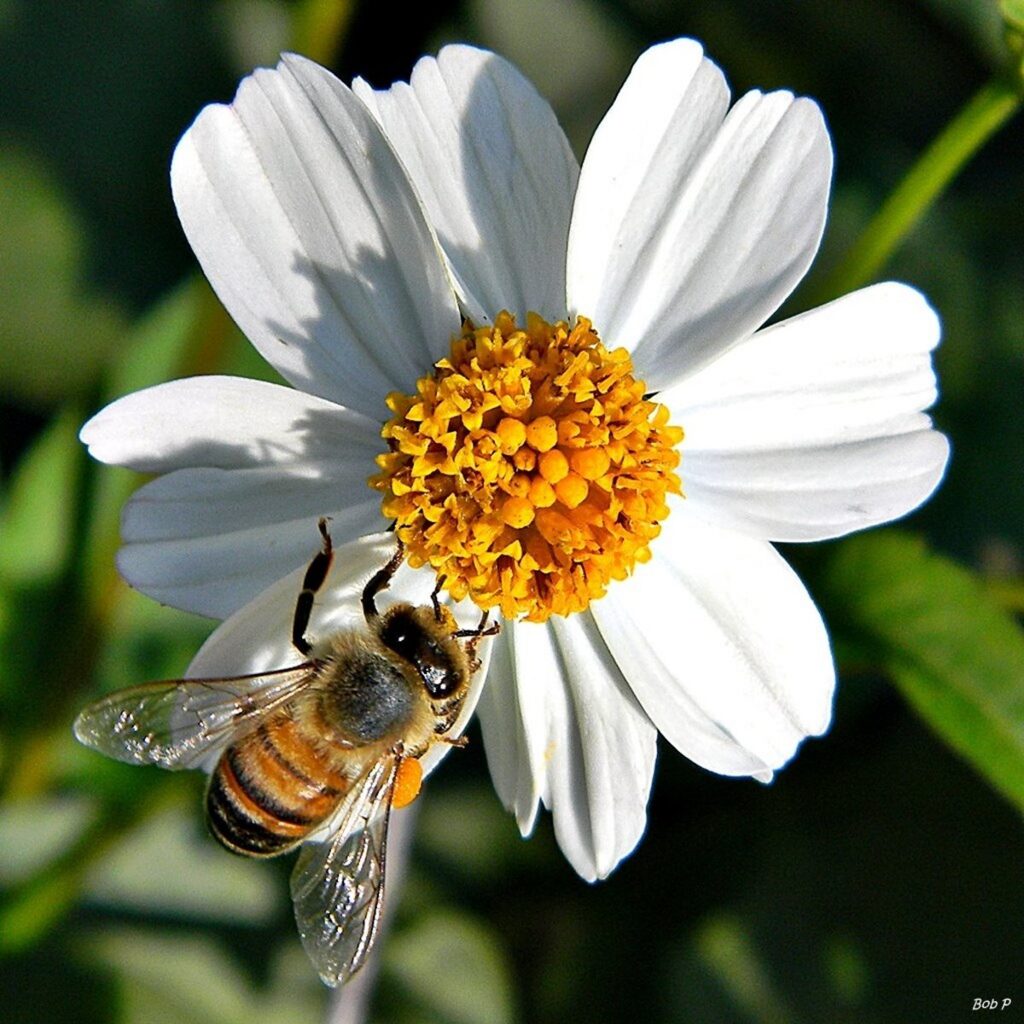
Spanish needles, beggarticks
Bidens alba is a prolific wildflower, native to the Southeastern U.S. In early spring, it provides critical nectar for honeybees and native bees and serves as an important host plant for butterfly species.
Bidens alba Benefits:
- Attracts and supports a wide range of pollinating insects
- Drought tolerant and easy to grow in most soil conditions
- Young fresh leaves and flowers can be added to salads
- Excellent food for chickens, rabbits, and Guinea pigs
Bidens alba Description
This low-growing and fast-spreading wildflower sends up tall flower heads with yellow centers and white petals, resembling small daisies. While it can become a bit of a bully in the garden, spreading and seeding itself rather aggressively, its importance to pollinating insects cannot be overlooked.
As one of the earliest blooms of spring, it offers critical food to honeybees and native bees. It’s the perfect garden addition for beekeepers and pollinator gardens. To contain its spread, plant in containers and place them near vegetable and fruit plants to attract bees and beneficial insects.
Bidens alba, and its smaller cousin Bidens pilosa, is also a common food crop in Africa and used in folk medicine throughout the Caribbean. It also makes an excellent dietary treat for chickens, rabbits, and Guinea pigs.
Tips for Germination
Fresh seeds will germinate readily in cooler temperatures, while older seeds are more vigorous as summer warms up. Both respond best to sunlight and should be surface sown for best results.

Buy Bidens alba Seeds Here
| Species Name: | Bidens alba |
| Common name(s): | Spanish needle, beggarticks, shepherd's needles |
| Defining Characteristics: | A member of the Asteraceae family, these small wildflowers have yellow centers surrounded by white petals. |
| Temperature requirement: | Hardy to 40F |
| Watering frequency: | Highly drought tolerant after being established. |
| Lighting: | Partial shade to full sun |
| Soil type: | Will grow equally well in dry sandy soil or rich, moist soils |
| Growth rate: | Grows quickly |
| Height: | 1 to 4 feet tall (outdoors) |
| Origin: | Naturalized in subtropical and tropical areas of Asia, Africa, and the Americas |
| Regional locality: | Unknown |
| USDA Hardiness Zone: | 9-11 |
| Toxicity Notes: | This plant is considered non-toxic to humans, and is commonly eaten and used in home remedies as well. For more information please visits the ASPCA list of Toxic and Non-Toxic Plants list of Toxic and Non-Toxic Plants |
| Common Pests: | |
| Common Problems: | |
| Perfect Potting Companions: | |
| Additional Notes: | This prolific spreader can be more attractive if trimmed back aggressively after flowering |
Sources
- Journal of the Australian Traditional Medicine Society
- Eat the Weeds
- Weed Science
- Florida Wildflower Foundation
